In its white paper, Beyond the Label: A clean food revolution, based on a nationwide online survey of 702 ‘ingredient conscious’ US adult primary shoppers conducted in Q2, 2017, Kerry argues that clean label now encompasses a combination of factors, from avoiding specific ingredients such as artificial colors/preservatives or allergens (40%); to nutrition – eg. less sugar, more protein (40%); and brand identity, sourcing, sustainability, company practices, ethics and manufacturing methods – including things like organic and Non-GMO claims (20%).
“Our research revealed that clean label is a catch-all indicator of healthy and safe food, with three clear areas of consumer expectations: ingredients, nutrition, and sustainability.”
The data also indicated that a small number of ingredient-conscious consumers – defined by Kerry as primary shoppers who “paid attention to the product label and considered ingredients while grocery shopping” – even regard some ‘natural’ ingredients (stevia, natural flavors, natural colors) as undesirable.
“In consumers’ quest for a truly clean label product, even certain natural ingredients are becoming unacceptable: almost 15% of millennials deemed ‘natural flavors’ as unacceptable in savory snacks, while less than 5% of boomers felt they were unacceptable."
Some shoppers say a truly 'clean' product has no flavor... natural or artificial
A spokesman added: "There is a niche set of younger millennials and Older Gen Zs that are looking for a truly clean product, that does not need the inclusion of any flavor, natural or artificial."
(Survey participants were asked to 'think about which ingredients you would you prefer not to have in you food and drinks.' They then selected and ranked at least five ingredients from a list of 54.)
Claims most strongly associated with clean labels:
- All-natural/100% natural
- Non-GMO
- No additives/preservatives
- Organics
- Made with real ingredients
- Sustainably produced
- Minimally processed
Is stevia a clean label ingredient?
Despite the success of brands such as Halo Top – which is sweetened with a combination of cane sugar and the high intensity natural sweetener stevia – some consumers don’t want to see either ingredient in categories such as ice cream, claimed Kerry: “Despite the natural source of stevia, 20% of consumers strongly rejected both sweetener types [sugar and high intensity sweeteners] even in the most indulgent of categories, ice cream.
"Stevia is not widely understood as a natural ingredient by consumers, despite it being derived from the stevia leaf.”
As for ingredients consumers are more generally looking to avoid, this depends on the product category, said Kerry, with its survey data suggesting that high fructose corn syrup, MSG, nitrites and nitrates, BHA and BHT, and caramel color, are top of the ‘no no’ list for shoppers of hot dogs and sausages, while MSG, hydrogenated oils, acids, maltodextrin and modified corn starch are ingredients shoppers don’t want to see in their snack products.
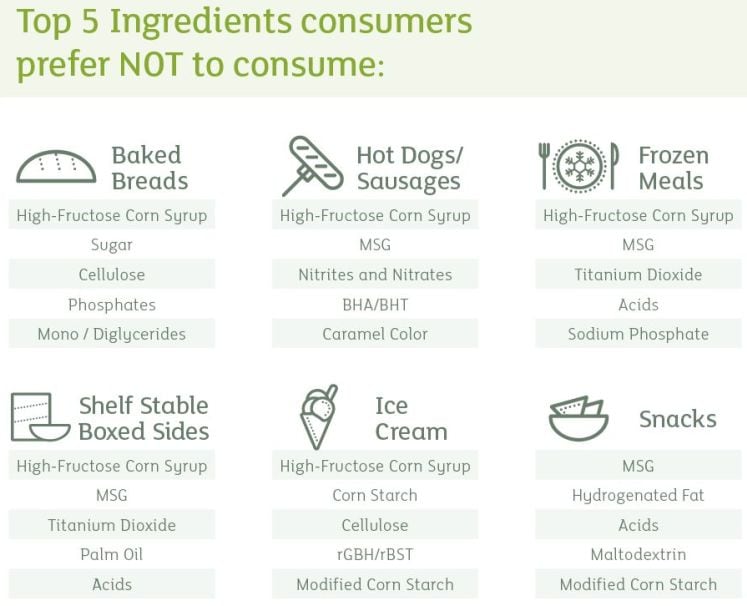
Clean label is more important in some categories than others
As to how important a clean label is, that depends to some extent on the category, added Kerry, with almost two thirds of respondents feeling a clean label is important in baked bread, compared with 54% who felt this way about ice cream.
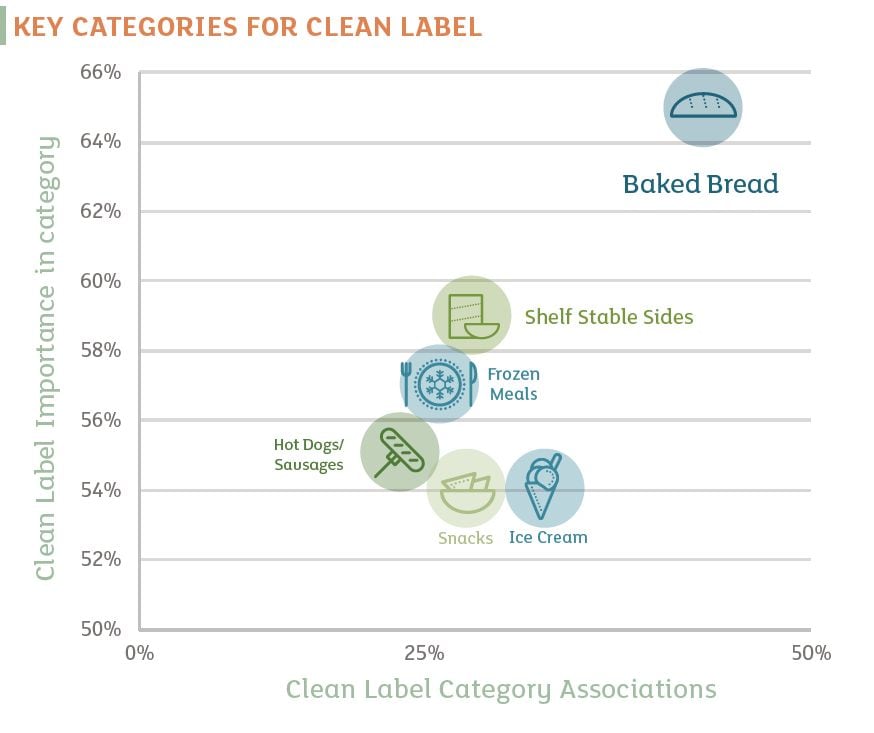
“Consumers placed highest importance on baked breads, shelf stable boxed sides, and frozen meals being clean. While snack and indulgent categories saw lower expectations, more than 50% of consumers still indicated it was important these categories had clean label options.”
Millennials and boomers focus on different things on food labels
From a generational perspective, claims such as ‘organic’ and ‘made with real ingredients’ resonated particularly well, while boomers were more concerned about avoiding specifics such as additives/preservatives, antibiotics, and hormones, said Kerry.
Boomers are also much more focused on sugar, fat, calories and sodium than millennials when they consult the Nutrition Facts panel, while millennials are more focused on protein, fiber, and vitamins, and were least likely to look at the panel (56% of millennials agreed that ‘I always read the nutritional panel’ compared with 76% of respondents aged over 65), said Kerry.
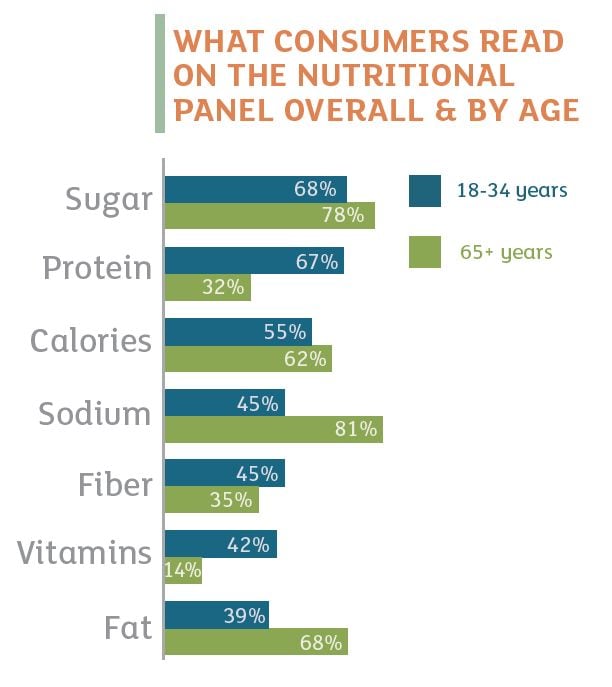
And while high fructose corn syrup is consistently cited as an ingredient to avoid, millennials are far less bothered about it than boomers, said Kerry, with 49% preferring not to consume it, vs 68% of respondents aged 65+. The same dynamic is evident when it comes to MSG, with 47% of millennials preferring not to consume it vs 67% of boomers. Older respondents were also more concerned about hydrogenated oils.
'Clean' also means sustainable, ethical...
When it comes to sustainability, factors such as responsible sourcing and ethical farming practices were just as important as environmental factors to consumers, while some also equated organic and non-GMO with health, added Kerry.
As for the actual term, ‘clean label,’ however, only 58% of the respondents (who defined themselves as ingredient conscious) were familiar with the phrase, and of those, more than a third said they did not know what the term meant.
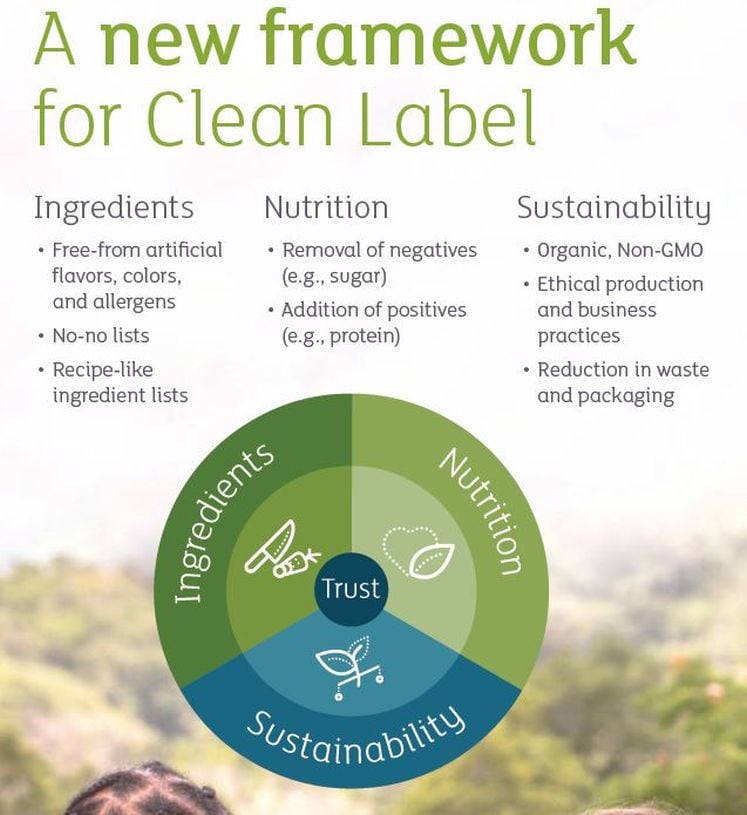
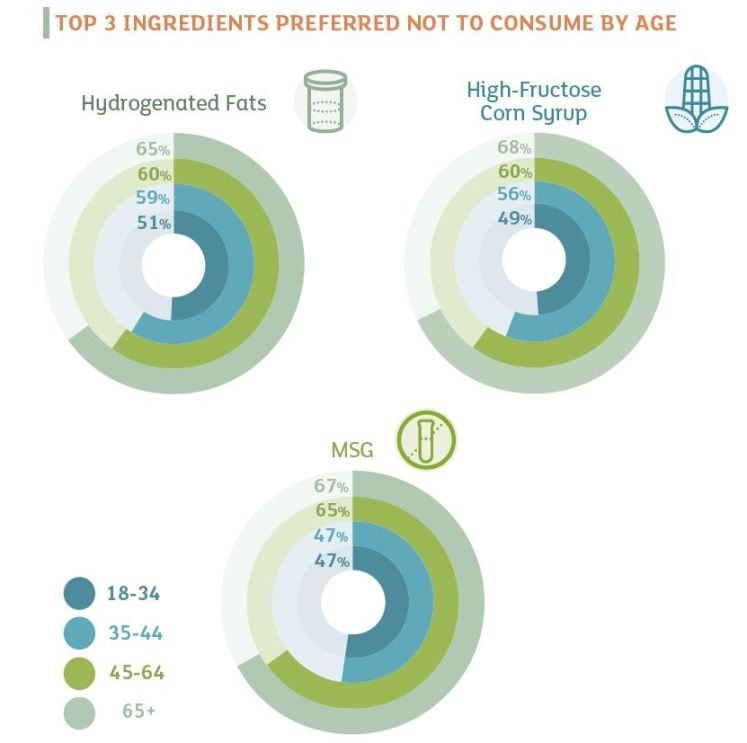
Join the clean label debate at FOOD VISION USA 2017
We'll be weighing into the clean label debate at FOOD VISION USA 2017 in Chicago next month, with a panel featuring:
- Greg Fleishman, Chief Operating Officer & Co-founder, Foodstirs and Chairman & Co-founder, Purely Righteous Brands
- Dr Shelley Balanko, SVP, The Hartman Group
- Galit Laibow, CEO and Co-Founder, Foodstirs
- Marc Halperin, Founder, Culinary Director, CCD Innovation
Get full details HERE.

